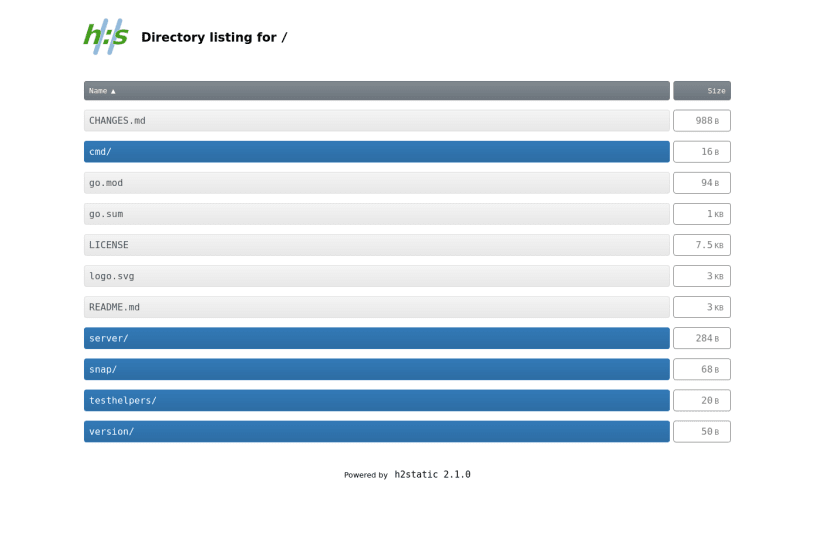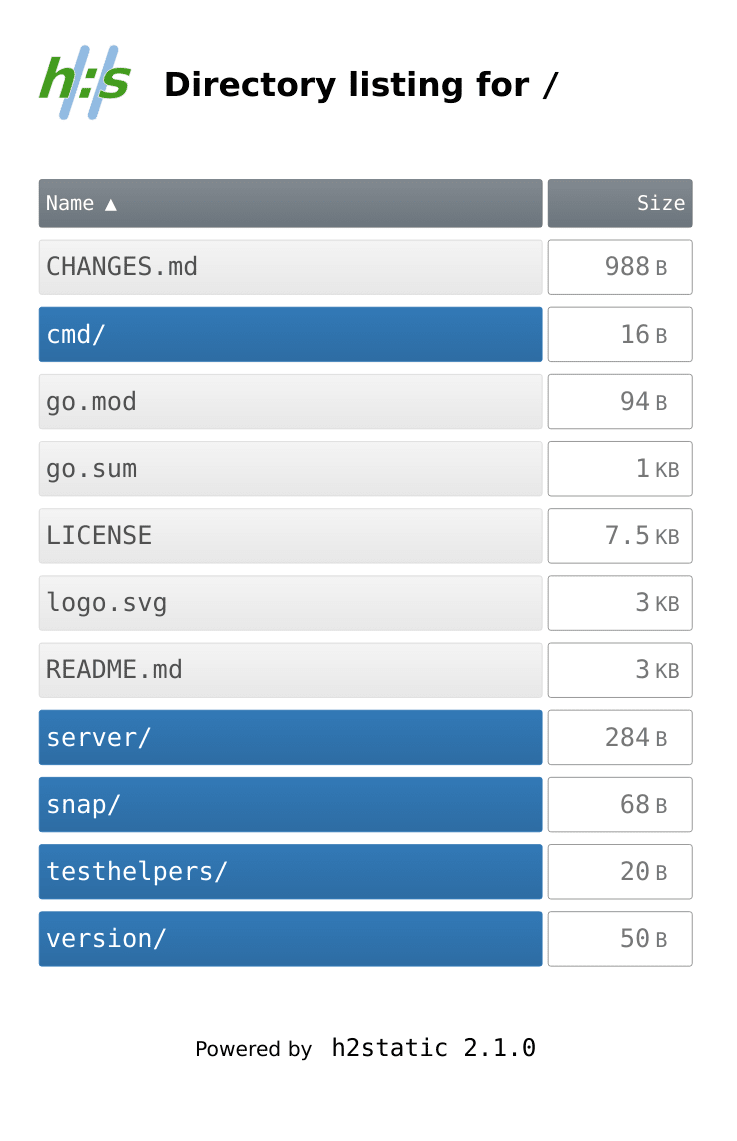


Static web server using the builtin Go http library.
It supports HTTP/2 and TLS.
This snap provides both an h2static command that can be run by any user,
with access to the user home directory, and a system-wide daemon service.
The service can be configured with the following options (via snap set):
allow-outside-symlinks
allow access to symlinks whose target is outside of the serve-path. This
is disabled by default since it might be a security issue.
basic-auth
content of the crednetials file for Basic Authorization. Each line should contain colon-separated pair of username and SHA512 hash of the password.
disable-h2
set to true to disable HTTP/2 support.
disable-index
set to true to disable directory index.
disable-lookup-with-suffix
set to true to disable disable matching files with .htm(l) suffix for paths without suffix.
listen
the address:port for the service to listen on. The address can be omitted
(e.g. :8080) to bind all addresses.
If this option empty or null, the service will not be started.
request-path-prefix
a path prefix to be stripped for the request. This is mostly useful in the case where the server is behind a reverse proxy with a prefix set.
serve-path
the directory to serve content from. it's set to $SNAP_COMMON if not
specified.
If the removable-media interface is connected, paths under /media can
also be used.
show-dotfiles
set to true to show hidden files (starting with a dot).
tls.cert, tls.key
ASCII contents of the TLS certificate and key. If both are set, HTTPS support will be enabled.
You are about to open
Do you wish to proceed?
Thank you for your report. Information you provided will help us investigate further.
There was an error while sending your report. Please try again later.
Snaps are applications packaged with all their dependencies to run on all popular Linux distributions from a single build. They update automatically and roll back gracefully.
Snaps are discoverable and installable from the Snap Store, an app store with an audience of millions.

Snap can be installed from the command line on openSUSE Leap 15.x and Tumbleweed.
You need first add the snappy repository from the terminal. Choose the appropriate command depending on your installed openSUSE flavor.
Tumbleweed:
sudo zypper addrepo --refresh https://download.opensuse.org/repositories/system:/snappy/openSUSE_Tumbleweed snappy
Leap 15.x:
sudo zypper addrepo --refresh https://download.opensuse.org/repositories/system:/snappy/openSUSE_Leap_15.6 snappy
If needed, Swap out openSUSE_Leap_15. for, openSUSE_Leap_16.0 if you’re using a different version of openSUSE.
With the repository added, import its GPG key:
sudo zypper --gpg-auto-import-keys refresh
Finally, upgrade the package cache to include the new snappy repository:
sudo zypper dup --from snappy
Snap can now be installed with the following:
sudo zypper install snapd
You then need to either reboot, logout/login or source /etc/profile to have /snap/bin added to PATH.
Additionally, enable and start both the snapd and the snapd.apparmor services with the following commands:
sudo systemctl enable --now snapd
sudo systemctl enable --now snapd.apparmor
To install h2static, simply use the following command:
sudo snap install h2static
Browse and find snaps from the convenience of your desktop using the snap store snap.

Interested to find out more about snaps? Want to publish your own application? Visit snapcraft.io now.